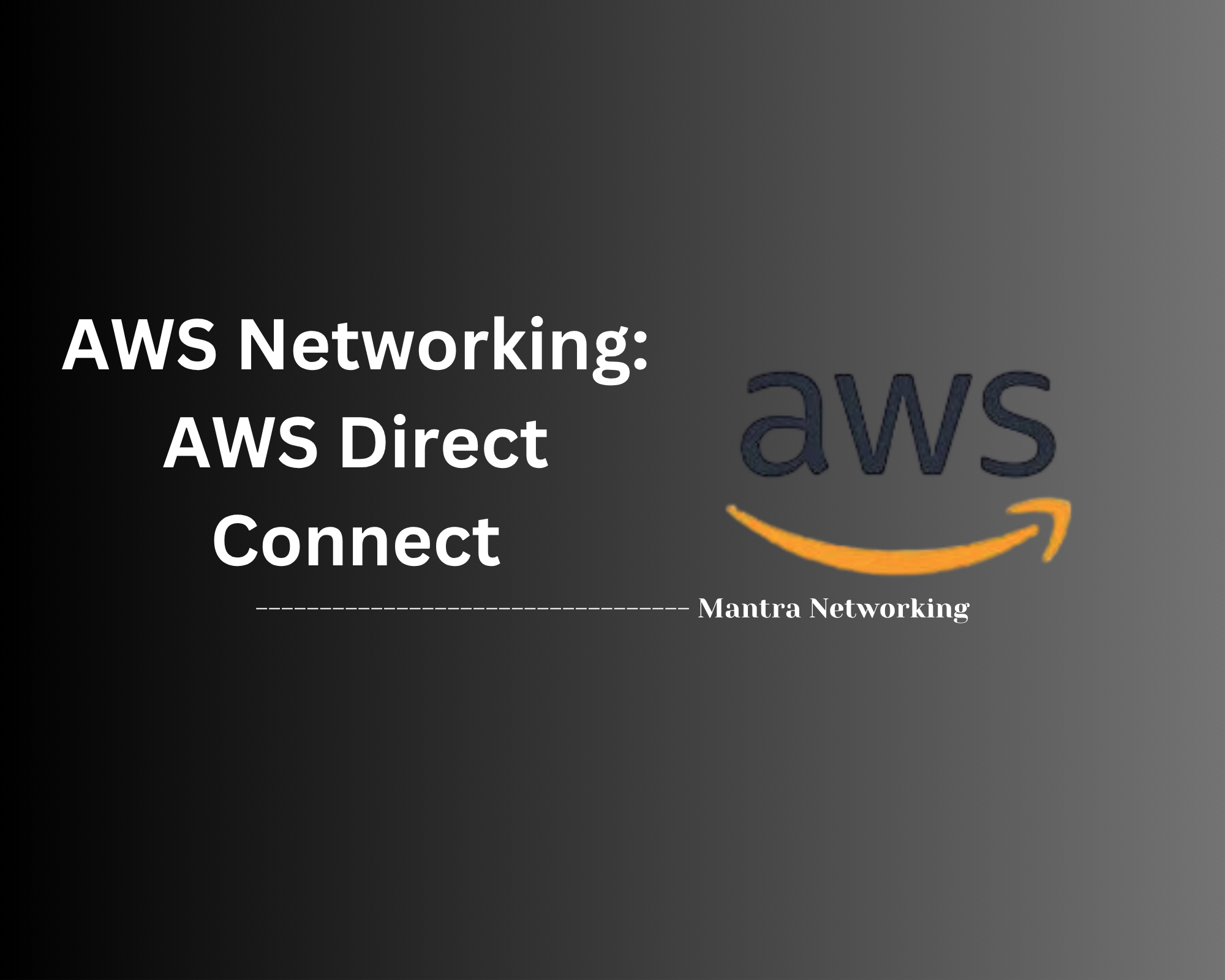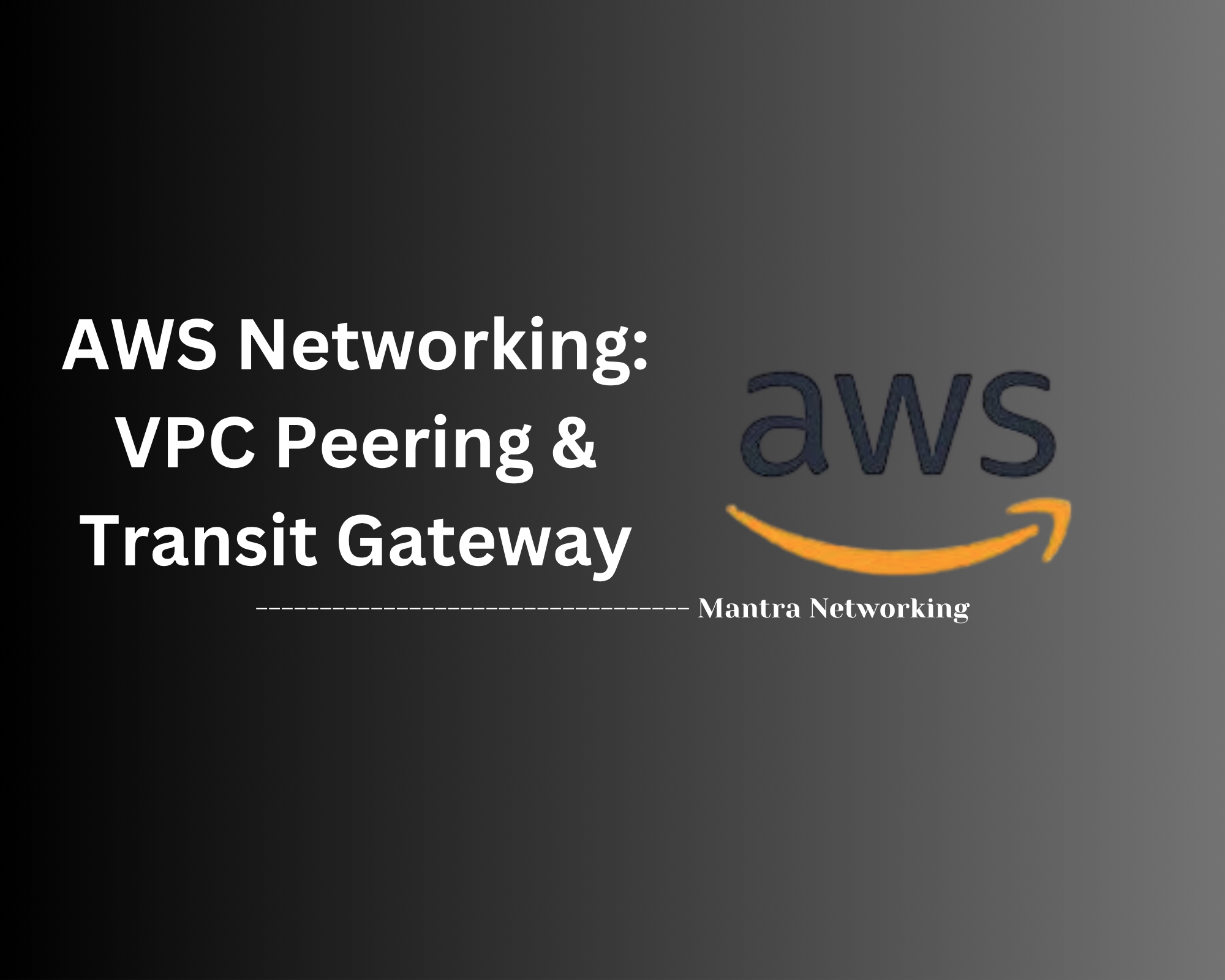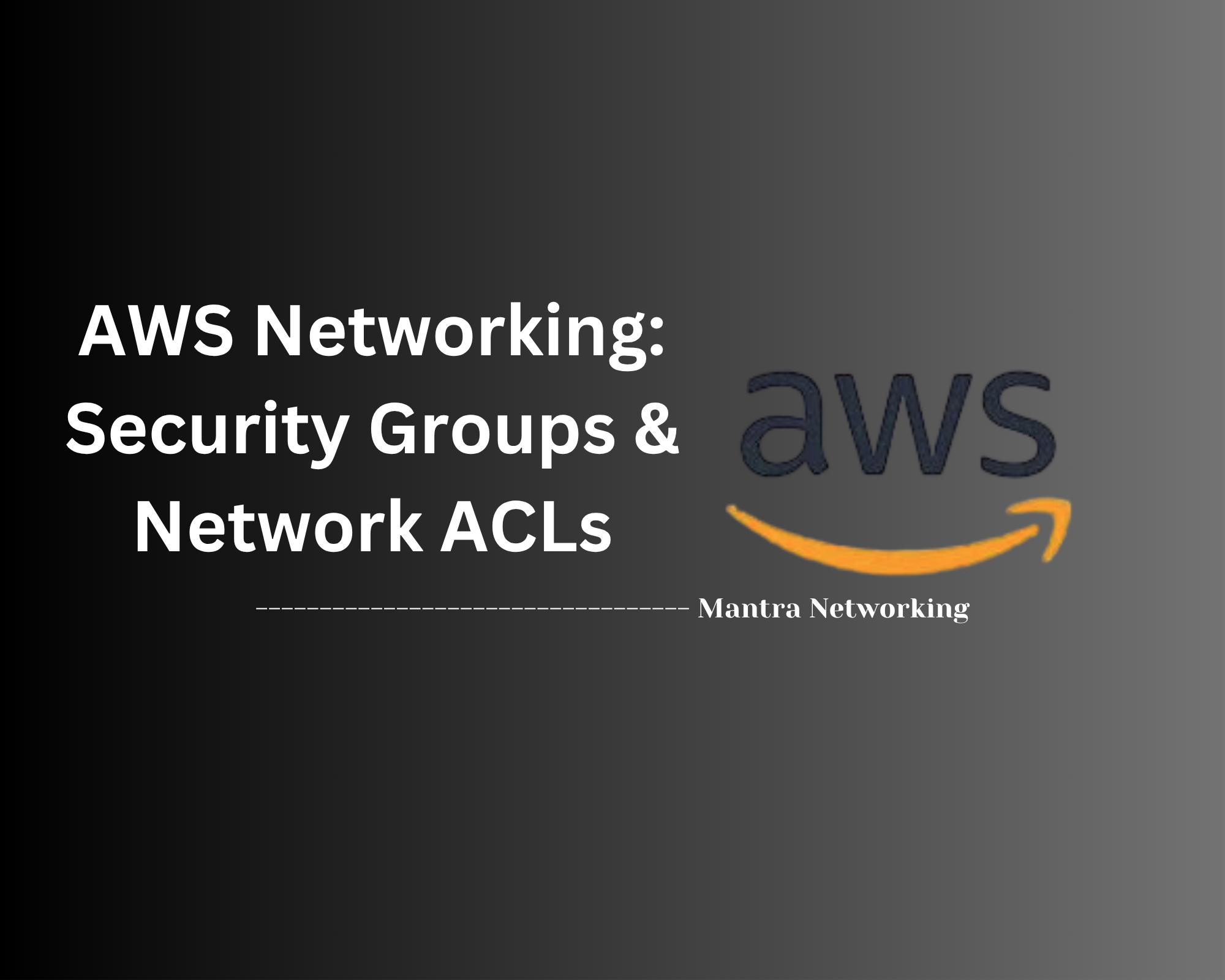Table of Contents
- Overview
- Core Components
- Route Table Components
- Common Use Cases
- Operations & Best Practices
- Frequently Used AWS CLI Commands
- Conclusion
AWS Networking: Route Tables — Overview
What is an AWS Route Table?
An AWS Route Table is a crucial networking resource within Amazon Virtual Private Cloud (VPC) that determines how network traffic is directed within, into, and out of your AWS environment. Each subnet in a VPC must be associated with a route table, which contains rules (known as routes) that specify where network traffic should go, based on its destination IP address.
Why You Need to Know About AWS Route Tables
Understanding route tables is essential because they:
- Control Traffic Flow: Route tables dictate how traffic moves between your subnets, to the internet, and to on-premises networks. A misconfigured route table can lead to network outages, unintentional exposure of resources, or communication failures between components.
- Enable Secure Network Design: By carefully managing routes, you can ensure that only intended traffic reaches your cloud resources, supporting strong security and compliance postures.
- Support Complex Architectures: Whether you're building a simple web app or a multi-tier, hybrid cloud architecture, route tables are the foundation for managing public/private separation, VPN connections, and cross-region networking.
How AWS Route Tables Work
Route tables consist of:
- Routes: Each rule specifies a destination CIDR block and a target. The target can be resources like an internet gateway, NAT gateway, VPC peering connection, virtual private gateway (VPN), or another network interface.
- Subnet Association: Every subnet associates with a route table. If not explicitly associated, a subnet uses the VPC's main route table by default.
- Routing Logic: When traffic is sent from a resource in a subnet, AWS checks the route table associated with that subnet. It selects the route with the most specific matching CIDR block—this is known as "longest prefix match" logic.
- Internal Communication: Each route table automatically includes a "local" route, enabling communication within the VPC.
Typical scenarios include:
- Allowing public-facing servers to communicate with the internet via an internet gateway.
- Directing private server traffic to the internet through a NAT gateway (for outbound connections only).
- Enabling communication with other VPCs or on-premises networks using VPC peering or VPNs.
- Routing traffic securely to AWS services via VPC endpoints.
In summary, route tables are the backbone of traffic control and segmentation in AWS cloud networking. Mastering them ensures your infrastructure is both secure and functionally robust.
Core Components
The following are the essential building blocks that make AWS Route Tables work for routing traffic within and outside of a VPC:
- Route Table: A collection of individual routes that determine how traffic is directed based on destination IP addresses. Every VPC automatically comes with a main route table, but you can create custom route tables for advanced configurations.
- Route: Each route is a rule that defines where network traffic should be directed, using a destination CIDR block and a target, such as an internet gateway, NAT gateway, or other AWS resource.
- Main Route Table: The default route table automatically created with every VPC. All subnets are associated with this unless they are explicitly associated with a different custom route table.
- Custom Route Table: User-created route tables that allow specific routing policies for selected subnets. These support advanced networking setups by enabling different routing behavior per subnet.
- Association: The link between a route table and a subnet. Each subnet can be associated with only one route table at a time, but one route table can be associated with multiple subnets.
- Target: The destination resource for routed traffic, such as an Internet Gateway (IGW), NAT Gateway, VPC Peering Connection, Virtual Private Gateway (VGW), or a Network Interface.
- Propagated Routes (for VPN/Direct Connect): Routes that are dynamically added to the route table from a Virtual Private Gateway or Direct Connect gateway, enabling hybrid cloud or private connectivity scenarios.
- Local Route: A default entry in every route table that allows communication between resources within the same VPC.
Route Table Components
Understanding AWS Route Table components is essential for managing traffic flow within and outside your VPC. Each component plays a role in determining how network packets are handled. Below are the primary components of a route table:
- Route Table ID: A unique identifier for the route table, which is used when associating with subnets or configuring through the AWS CLI or API.
-
Routes:
A set of rules in the route table, with each rule specifying a destination CIDR block and a target (such as an internet gateway, NAT gateway, virtual private gateway, or VPC peering connection). These rules control how packets are directed.
Example: A route with destination0.0.0.0/0and target as an Internet Gateway allows outbound access to the Internet for associated subnets. - Destination CIDR: Defines the range of IP addresses to match for this route. All network traffic matching this range will follow the specified target.
- Target: The resource where matching traffic should be sent. This could be an Internet Gateway, NAT Gateway, a network interface, or other routing entities.
- Subnet Associations: A list of subnets linked to this route table. Every subnet must be associated with one route table at a time. If not explicitly associated, subnets use the VPC’s main route table by default.
- Main Route Table: The default, auto-created table for a VPC. Subnets use this route table unless explicitly associated with a custom table.
- Propagated Routes: Routes dynamically added from Virtual Private Gateways or Direct Connect Gateways, allowing integration with on-premises networks or hybrid architectures.
- Edge and Gateway Associations: Specialized associations between a route table and an internet gateway, virtual private gateway, or transit gateway for more complex routing scenarios.
- Local Route: A default entry for every route table, enabling internal communication between resources inside the same VPC.
| Component | Description |
|---|---|
| Route Table ID | Unique identifier for the route table |
| Routes | List of destination-target pairs determining traffic flow |
| Destination CIDR | IP address range for traffic matching |
| Target | AWS resource such as IGW, NAT Gateway, VPN, or network interface |
| Subnet Associations | Subnets using this route table |
| Main Route Table | Default table for the VPC, can be replaced but not deleted |
| Propagated Routes | Routes automatically learned via VPN or Direct Connect |
| Edge and Gateway Associations | Associations for advanced routing to gateways and appliances |
| Local Route | Allows communication within the VPC |
Common Use Cases
AWS Route Tables offer flexibility to support a wide range of networking requirements within a Virtual Private Cloud (VPC). Below are the most common routing configurations and scenarios:
-
Public Subnet Routing (Internet Access):
Enable instances in a subnet to access the internet by adding a route with destination0.0.0.0/0and target as an Internet Gateway (IGW).- Use case: Web servers needing inbound/outbound internet connectivity.
-
Private Subnet Routing (NAT Gateway):
Route internet-bound traffic from private subnets to a NAT Gateway for secure, outbound-only internet access.- Use case: Application servers that fetch updates or dependencies from the internet while remaining unreachable from outside.
-
VPC Peering Connections:
Add routes so that instances in one VPC can communicate with those in another VPC over private IP (using a VPC peering connection).- Use case: Multi-VPC architectures requiring private cross-VPC communication.
-
VPN and Direct Connect:
Direct traffic to on-premises networks via routes targeting a Virtual Private Gateway (VGW). Route propagation can automate these entries.- Use case: Hybrid cloud solutions where AWS resources interact with data centers.
-
Transit Gateway Routing:
Centralize and simplify routing between multiple VPCs, VPNs, and on-premises sites using AWS Transit Gateway.- Use case: Enterprises managing complex, large-scale multi-network connectivity.
-
VPC Endpoints (Gateway and Interface):
Route traffic to AWS services such as S3 or DynamoDB via VPC endpoints without using the public internet.- Use case: Secure, private access to AWS services from your VPC.
-
Egress-Only Internet Gateway (for IPv6):
Allow outbound-only internet access for IPv6-enabled resources in private subnets using an egress-only internet gateway.- Use case: IPv6 workloads requiring outbound connectivity without direct inbound access.
-
Routing for Outposts and Local Gateways:
Enable communication between AWS Outposts and on-premises environments or between subnets across multiple Outposts.- Use case: Hybrid deployments leveraging AWS hardware on-premises.
-
Internal Communication (Local Routing):
All route tables include a default route for intra-VPC traffic, enabling communication between subnets within the same VPC.- Use case: Splitting workloads across isolated subnets while maintaining internal reachability.
Operations & Best Practices
Effectively managing AWS Route Tables is critical for secure, reliable, and scalable networking in your VPC. Here are the core operational steps and best practices to follow:
-
Plan Route Table Associations Carefully:
Each subnet in your VPC should be explicitly associated with the appropriate route table for its function (public, private, VPN, etc.). Subnets not explicitly associated use the main route table by default. Explicitly associate subnets to avoid confusion and maintain clear network boundaries.
Tip: For complex environments, consider using a separate route table for each subnet type.[1][6][12] -
Leverage the Most Specific Route Matching:
AWS uses the route with the longest prefix match (most specific CIDR block) for a given destination. This allows for granular routing control and segmented network traffic flows.[1][5] -
Monitor and Audit Route Table Changes:
Enable AWS CloudTrail and CloudWatch to monitor route table modifications. Set up alerts for unauthorized or unexpected changes, as misconfigurations can expose resources or disrupt traffic.[10] -
Utilize Route Propagation:
When integrating with VPNs or AWS Direct Connect, enable route propagation. This dynamically updates your route tables with remote network routes, reducing manual configuration effort and error risk.[2][4] -
Validate Routing with AWS Tools:
Use VPC Reachability Analyzer and VPC Flow Logs to debug and diagnose network path issues. These tools help pinpoint connectivity errors and validate routing changes before deploying to production environments.[7][13] -
Minimize Overlapping and Conflicting Routes:
Avoid CIDR overlap and multiple conflicting routes as this can cause unpredictable traffic flows. Rely on AWS' longest prefix match logic and document all route entries clearly.[5] -
Control Access with Network ACLs and Security Groups:
Route tables decide where traffic goes, while Network ACLs and Security Groups control what traffic is allowed in or out. Use both for defense-in-depth, ensuring that traffic is both correctly routed and securely filtered.[2][4] -
Document and Tag Routings:
Use descriptive tags and clear documentation for route tables to simplify management and troubleshooting, especially as your environment grows. -
High Availability Awareness:
For architectures using NAT gateways or appliances, deploy in each Availability Zone and update route tables accordingly. This avoids single points of failure and maximizes uptime.[3] -
Limit the Number of Route Tables:
Be aware of AWS-imposed route table limits per VPC. Plan and architect for growth while staying within these boundaries.[2][4]
Frequently Used AWS CLI Commands
Below are some of the most frequently used AWS CLI commands for managing Route Tables in your VPC. These commands help you automate and script key networking tasks with precision:
-
List All Route Tables in a VPC
aws ec2 describe-route-tables --filters "Name=vpc-id,Values=<your-vpc-id>"
Lists every route table associated with the specified VPC. Helps verify current route table configurations and locate table IDs for further action. -
Create a Custom Route Table
aws ec2 create-route-table --vpc-id <your-vpc-id>
Creates a new route table within your VPC. Use the output route table ID for further customization or associations. -
Add a Route to a Route Table
aws ec2 create-route --route-table-id <route-table-id> --destination-cidr-block <dest-cidr> --gateway-id <gateway-id>
Adds a route entry for a specific destination and target, such as an Internet Gateway, NAT Gateway, or VPC peering connection. -
Associate a Subnet with a Route Table
aws ec2 associate-route-table --subnet-id <subnet-id> --route-table-id <route-table-id>
Links a subnet to a specific route table. Each subnet can only be associated with one route table at a time. -
Disassociate a Subnet from a Route Table
aws ec2 disassociate-route-table --association-id <association-id>
Removes the association between a subnet and a route table. Use this when reorganizing network boundaries or changing subnet functions. -
Replace the Main Route Table Association
aws ec2 replace-route-table-association --association-id <association-id> --route-table-id <route-table-id>
Changes which route table acts as the main one for the VPC. -
Delete a Route Table
aws ec2 delete-route-table --route-table-id <route-table-id>
Deletes a custom route table (cannot be used on the main route table). Make sure it is not associated with any resources before deleting.
Conclusion
Throughout this blog post on AWS Networking: Route Tables, we’ve taken a comprehensive look into one of the foundational elements of Amazon VPC networking. Route tables may seem simple on the surface, but they are powerful tools that enable secure, efficient, and scalable traffic flows in the cloud.
🔑 Key Takeaways:
- Understanding Route Tables: At the core of networking in AWS, route tables determine how and where traffic flows within and beyond your VPC. Every subnet must be associated with exactly one route table at a time.
- Core Components: We explored the essential building blocks like route table IDs, routes, targets, subnet associations, and propagated routes. These components work together to establish predictable network behavior.
- Real-World Use Cases: From enabling public and private subnet communication to supporting hybrid cloud with VPN/Direct Connect, route tables are key in a wide array of architectures.
- Best Practices: Properly associating route tables, avoiding CIDR overlaps, tagging for clarity, auditing changes, and leveraging tools like VPC Flow Logs are all essential for maintaining a secure and well-organized network.
- AWS CLI Mastery: Using the AWS CLI allows you to script, automate, and manage route tables efficiently, making infrastructure-as-code and DevOps flows more powerful and repeatable.
Whether you're building secure private applications, creating seamless hybrid connections, or supporting large-scale microservices, AWS Route Tables are a critical part of the picture. By mastering their components and learning key operational tips, you're well on your way to creating more secure, resilient, and scalable cloud architectures.
Thanks for reading! 👋
Happy networking in the cloud! ☁️✨



